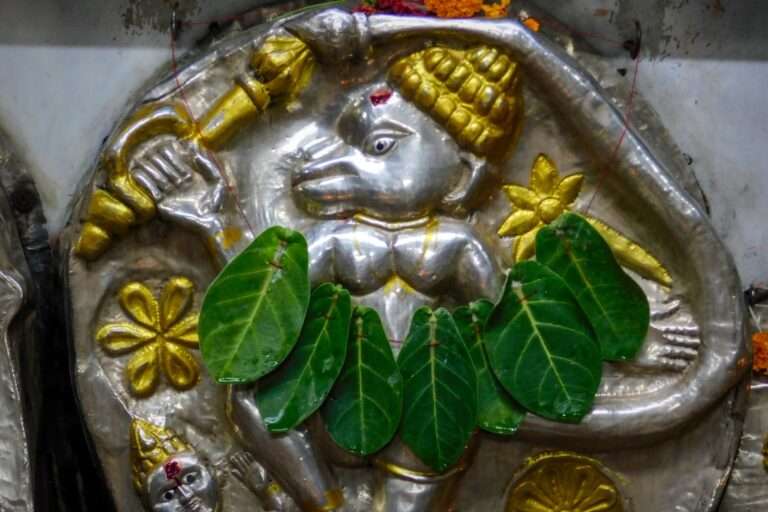The Significance of Color Symbolism in Festivals and Celebrations

Color symbolism is the use of specific colors to convey meaning and evoke emotions in various cultural contexts. It is a powerful tool that has been utilized in festivals and celebrations throughout history. Colors have the ability to communicate messages, represent cultural values, and create a sense of unity among participants. Whether it is the vibrant reds of Chinese New Year or the pastel hues of Easter, color symbolism plays a significant role in enhancing the overall experience of festivals and celebrations.
The importance of color symbolism in festivals and celebrations cannot be overstated. Colors have the ability to transcend language barriers and communicate on a universal level. They have the power to evoke emotions, create ambiance, and enhance the overall atmosphere of an event. Color symbolism adds depth and meaning to festivities, making them more memorable and impactful for participants. It is a way for cultures to express their values, beliefs, and traditions through a visual language that is accessible to all.
The Historical Significance of Color Symbolism in Festivals and Celebrations
Color symbolism has a rich history that dates back to ancient civilizations. In ancient Egypt, for example, the color blue was associated with the Nile River and represented fertility and rebirth. The color red was associated with the god Seth and symbolized chaos and destruction. These color associations were incorporated into festivals and celebrations as a way to honor and appease the gods.
As civilizations evolved, so did color symbolism in festivals and celebrations. In ancient Greece, for instance, the color white was associated with purity and was often used in religious ceremonies and festivals. In medieval Europe, colors such as red, green, and gold were used to represent different social classes during festivals and processions.
The Cultural Importance of Color Symbolism in Festivals and Celebrations
Color symbolism varies across different cultures, reflecting the unique values, beliefs, and traditions of each society. In some cultures, certain colors may hold deep cultural significance and be associated with specific meanings. For example, in Chinese culture, the color red is considered lucky and is often used in festivals and celebrations to bring good fortune and ward off evil spirits.
Color symbolism also plays a crucial role in cultural identity. It is a way for cultures to express their heritage and distinguish themselves from others. For example, the vibrant colors of the Holi festival in India represent the arrival of spring and the triumph of good over evil. The use of color in this festival is a reflection of the rich cultural heritage and traditions of the Indian people.
How Different Cultures Use Color Symbolism in Festivals and Celebrations
Color symbolism is incorporated into festivals and celebrations in various ways across different cultures. In India, for example, the Festival of Colors, also known as Holi, is celebrated by throwing colored powders and water at each other. Each color used during the festival holds a specific meaning. Red represents love and fertility, blue represents the Hindu god Krishna, yellow represents turmeric, and green represents new beginnings.
In Japan, the cherry blossom festival, known as Hanami, is celebrated when cherry blossoms bloom in spring. The delicate pink color of the cherry blossoms symbolizes renewal and the transient nature of life. The festival is a time for people to gather under the cherry blossom trees, have picnics, and appreciate the beauty of nature.
The Role of Color Symbolism in Religious Festivals and Celebrations
Religious festivals and celebrations often incorporate color symbolism to convey spiritual meanings and enhance the religious experience. In Christianity, for example, the color purple is associated with Lent, a period of fasting and reflection leading up to Easter. Purple represents penance and preparation for the resurrection of Jesus Christ.
In Hinduism, different colors are associated with different deities and are used to honor them during festivals and celebrations. For example, the color yellow is associated with the goddess Saraswati, who represents knowledge and learning. During the festival of Vasant Panchami, devotees wear yellow clothes and offer yellow flowers to the goddess.
The Impact of Color Symbolism on Festivals and Celebrations Today

Color symbolism continues to influence modern festivals and celebrations in profound ways. It adds depth and meaning to these events, making them more immersive and engaging for participants. Color choices in festivals and celebrations can evoke specific emotions and create a sense of unity among participants.
In contemporary culture, color symbolism is often used in marketing and branding for festivals and celebrations. For example, the use of bright, vibrant colors in advertisements for music festivals conveys a sense of excitement and energy. Similarly, the use of pastel colors in advertisements for Easter celebrations creates a sense of joy and renewal.
The Psychology of Color Symbolism in Festivals and Celebrations
Color symbolism has a psychological impact on human emotions and behavior. Different colors can evoke different emotional responses in individuals. For example, warm colors such as red, orange, and yellow are often associated with feelings of warmth, energy, and excitement. Cool colors such as blue, green, and purple are often associated with feelings of calmness, relaxation, and tranquility.
The psychological impact of color symbolism in festivals and celebrations can influence how people perceive and experience these events. For example, the use of warm colors in a festival setting can create a lively and energetic atmosphere, while the use of cool colors can create a more serene and peaceful ambiance.
The Influence of Color Symbolism on Festive Attire and Decorations
Color symbolism is reflected in festive attire and decorations, adding visual interest and enhancing the overall aesthetic appeal of festivals and celebrations. Festive attire often incorporates colors that hold cultural or symbolic significance. For example, brides in many cultures wear white to symbolize purity and innocence, while red is often worn during weddings in Chinese culture to symbolize luck and happiness.
Decorations for festivals and celebrations also utilize color symbolism to create a visually appealing and meaningful environment. For example, during Christmas, the colors red and green are commonly used in decorations to represent the holly berries and evergreen trees associated with the holiday. These colors evoke feelings of warmth, joy, and tradition.
The Future of Color Symbolism in Festivals and Celebrations
As cultures continue to evolve, so too will color symbolism in festivals and celebrations. With advancements in technology, new possibilities for incorporating color symbolism into these events may arise. For example, the use of LED lighting can create dynamic color displays that can enhance the visual impact of festivals and celebrations.
Additionally, as societies become more interconnected, there may be an increased exchange of color symbolism between cultures. This can lead to the blending of different color associations and the creation of new meanings in festivals and celebrations.
The Enduring Significance of Color Symbolism in Festivals and Celebrations
In conclusion, color symbolism plays a vital role in festivals and celebrations across cultures. It adds depth, meaning, and visual interest to these events, enhancing the overall experience for participants. Color symbolism reflects cultural values, beliefs, and traditions, and serves as a way for cultures to express their identity.
The historical significance of color symbolism in festivals and celebrations demonstrates its enduring importance in human culture. As societies continue to evolve, color symbolism will continue to evolve with them, adapting to new technologies and cultural influences. The impact of color symbolism on human emotions and behavior further emphasizes its significance in festivals and celebrations.
In the future, color symbolism will likely continue to play a prominent role in festivals and celebrations as cultures continue to evolve and new technologies emerge. The potential for new color associations and meanings will further enrich these events, creating more immersive and engaging experiences for participants. Color symbolism will continue to be a powerful tool for expressing cultural identity, conveying meaning, and evoking emotions in festivals and celebrations.
If you’re interested in exploring the fascinating world of color symbolism, you might also enjoy reading about the symbolism of the moon. The moon has long been associated with various meanings and interpretations across different cultures and religions. From representing femininity and intuition to symbolizing emotions and the subconscious mind, the moon holds a significant place in our collective consciousness. To delve deeper into this topic, check out this insightful article on what the moon symbolizes.
FAQs
What is color symbolism?
Color symbolism is the use of colors to represent ideas, emotions, and cultural beliefs. Different colors have different meanings in different cultures and contexts.
What are some common colors used in holidays and celebrations?
Red, green, white, black, gold, and silver are some of the most common colors used in holidays and celebrations around the world.
What does the color red symbolize?
Red is often associated with love, passion, and energy. It is also commonly used to represent danger, warning, and anger.
What does the color green symbolize?
Green is often associated with nature, growth, and fertility. It is also commonly used to represent luck, envy, and jealousy.
What does the color white symbolize?
White is often associated with purity, innocence, and peace. It is also commonly used to represent mourning and death in some cultures.
What does the color black symbolize?
Black is often associated with darkness, mystery, and mourning. It is also commonly used to represent power, elegance, and sophistication.
What does the color gold symbolize?
Gold is often associated with wealth, prosperity, and success. It is also commonly used to represent royalty and divinity.
What does the color silver symbolize?
Silver is often associated with modernity, technology, and innovation. It is also commonly used to represent elegance and sophistication.





